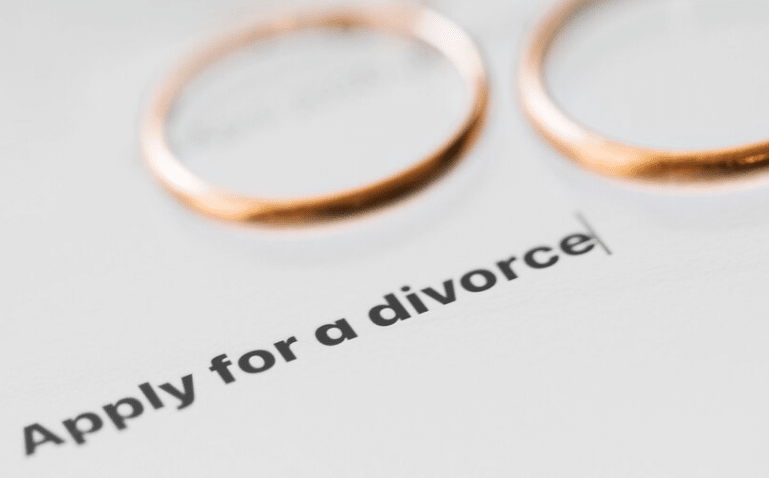Divorce is a difficult time. Understanding what divorce is and how it is handled in Australia is essential.
This article will provide a comprehensive overview of divorce so you can confidently approach it.
- What is divorce?
- How does separation work?
- Are you eligible for divorce?
- How do I apply for a divorce?
- What if I’m filing as a sole applicant?
Download our FREE Divorce Checklist for a more detailed guide on the next steps.
What is divorce?
In Australia, divorce is the legal termination of a marriage. Governed by the Family Law Act 1975, it’s a separate legal process from property settlement or child custody arrangements. The primary ground for divorce in Australia is the marriage broke down irretrievably. The divorce must be preceded by a 12-month separation period.
Either spouse can initiate the divorce, and it can be filed as a sole application by one party or a joint application by both parties. Once the divorce is granted, there’s a one-month waiting period before the divorce becomes final.
It’s important to note that divorce in Australia doesn’t automatically address issues like financial settlements or child custody. You must make proper arrangements for these matters separately.

What is the difference between Divorce and Separation?
In Australia, the terms ‘divorce’ and ‘separation’ refer to two distinct legal statuses concerning the end of a relationship.
Divorce
Divorce applies explicitly to couples who are legally married. It is a formal process that legally ends a marriage, allowing each individual to remarry if they want to.
To apply for a divorce, couples must undergo a mandatory separation period of 12 months to confirm the irretrievable breakdown of the marriage.
Separation
On the other hand, separation can apply to married and de facto couples, including those in a relationship but not legally married. Separation occurs when one or both partners decide to end the relationship and may involve dividing assets and debts and making arrangements for children.
While married couples can separate without legally divorcing, de facto couples can undergo separation without the need for any legal proceedings.
How Does Separation Work in Australian Divorce Law?
According to Australian divorce law, couples must undergo a separation period of 12 months. This duration serves to confirm the irretrievable breakdown of the marriage.
The commencement of separation is marked by one partner’s intent to end the marriage and their communication of this intent. It’s essential to understand that physical and emotional detachment are considered during this period.
Interestingly, short reconciliations are permissible within these 12 months. However, these reconciliations shouldn’t total more than three months. If they do exceed this timeframe, the 12-month separation period restarts.
Separation under one roof
A unique aspect of the Australian divorce system is the concept of “separation under one roof.” This situation arises when couples have separated but continue to live in the same residence. Various reasons, such as financial constraints or child-rearing considerations, might lead to this arrangement.
However, proving “separation under one roof” can be more challenging. Evidence, such as maintaining separate bedrooms or engaging in separate social activities, can support the separation claim.
Third-party witnesses, like friends or family members, can also play a crucial role. They can provide affidavits or testimonies that validate the couple’s separated status, even if they share a home. It’s also vital for the separating couple to communicate their decision to others, reinforcing the authenticity of their separation.

Are you eligible for divorce?
The parties must satisfy several criteria to be eligible for divorce.
Valid marriage
To be eligible for a divorce, you must first be in a legally valid marriage.
In Australia, a marriage must adhere to the conditions and provisions of the Marriage Act 1961. Here are the critical criteria that make a marriage valid in Australia:
- Must freely and fully consent to the marriage. Consent obtained under duress, fraud, or undue influence is not valid.
- Both parties must be at least 18 years old. A person aged 16 or 17 can marry in very limited circumstances, but this requires a court’s approval.
- The parties must not be closely related. Marriages between direct descendants or siblings, including half-siblings, are prohibited.
- Both parties must be free to marry. This means neither party can be legally married to someone else at the time of the wedding.
- Must understand the nature and effect of the marriage ceremony.

Residency requirements
Couples married overseas and wishing to get a divorce in Australia have added criteria. Such a divorce cannot proceed without specific residency requirements being met. At least one of the parties in the marriage must meet one of the following residency requirements:
- Either party is an Australian citizen by birth, descent, or grant of Australian citizenship.
- Either party is lawfully present in Australia and has been a resident for at least 12 months immediately before filing for divorce.
- Either party regards Australia as their home and intends to live in Australia indefinitely, or they have lived in Australia for at least 12 months before filing and continue to do so.
Marriage Duration
If the marriage lasted less than two years, couples are generally required to attend counselling to explore possibilities for reconciliation.
If reconciliation is not possible, a counsellor’s certificate stating that the parties have considered reconciliation must be provided, or the couple must seek permission from the Court to proceed with the divorce without this certificate.

How do I apply for a divorce?
There are several steps to the divorce process. It’s critical to understand the necessary steps. Any mistakes could result in the divorce application being declined by the Court.
1. Find your marriage certificate
Your marriage certificate is essential to getting a divorce. If you can’t find the original, you can apply for a replacement with the Registry of Births, Deaths and Marriages. You must produce the official certificate. A ceremonial or commemorative marriage certificate is not acceptable.
If the Marriage Certificate Isn’t in English
If the marriage certificate is in a language other than English, additional steps are required:
- Certified Translation. The marriage certificate must be translated into English by an accredited translator.
- Affidavit. An affidavit from the translator may be required, along with the translated certificate. This affidavit should attest to the translator’s qualifications and confirm that the translation is a true and accurate representation of the original certificate.
- Original and Translated Copies. When filing for divorce, provide the original marriage certificate (in the foreign language) and the certified English translation.
2. Complete the application
The easiest way to apply is to file online. The eFiling process is as follows:
- Register with the Federal Circuit and Family Court portal.
- Select Application for Divorce and choose the appropriate Court.
- Fill out the application form.
- Upload any necessary additional documentation. This may include:
- Affidavit of Service by Hand
- Affidavit Proving Signature
- Affidavit of Separation Under One Roof
- Parenting orders
- Lock the application to prevent changes.
- Print the application.
- You and your former partner must sign the Affidavit of Efiling in the presence of a Justice of the Peace.
- Download the Marriage, Families and Separation brochure.
- Submit the application and pay the filing fee.
- Select a court date. Not all applicants are required to attend court proceedings.
The Court will check your application and contact you should any rectifications be necessary. Your divorce order/divorce certificate will be effective one month and one day after your application is accepted.

Read the full article here: How to Apply for Divorce in Australia in 2025?
What if I’m filing as a sole applicant?
If your spouse doesn’t agree to the divorce, you can still apply as a sole applicant.
1. Prepare the Documents
- You’ll need a copy of the Application for Divorce and Affidavit of eFiling.
- Include a copy of the brochure “Marriage, Families and Separation”, which provides information about divorce.
2. Determine the Method of Service:
- Personal Service. This is the most common method. Someone else (not you) must hand the documents directly to your former spouse.
- Alternative Methods. If you cannot locate your spouse or there are other challenges, you might need to apply to the Court for an order for substituted or dispensation of service.
3. Engage a Process Server or Trusted Individual
- If using personal service, you can hire a professional process server or ask someone you trust (over 18) to deliver the documents.
- Remember, you cannot serve the documents yourself.
4. Serve the Documents
The server must give the divorce application and the brochure to your former spouse.
5. Complete an Affidavit of Service
- After serving the documents, the server (whether a process server or a trusted individual) must complete an “Affidavit of Service by Hand.”
- This affidavit confirms the service’s date, time, and location and describes the person served.
6. Affidavit Proving Signature (if necessary)
If the server doesn’t know the person served, the applicant must complete an “Affidavit Proving Signature (divorce)”. A photocopy of the signed Affidavit of Service must be attached.
7. File Affidavits with the Court
Submit the completed affidavits to the Court before the hearing date to prove that your former spouse was duly served.
8. Attend the Hearing
If there are children under 18, you must attend the divorce hearing. If not, and if the service was successful, you might not need to attend.

Conclusion
To successfully navigate the complex process of divorce in Australia, it’s important to have a clear understanding of the legal requirements and procedures involved. From the initial stages of separation to the final granting of a divorce, each step requires specific documentation and criteria that must be met. Whether filing jointly or as a sole applicant, being well-informed and prepared is crucial.
This article provides a comprehensive overview of what divorce is and helps individuals approach divorce clearly and confidently. Remember, while the legal process can be daunting, seeking guidance and understanding your rights can make the journey smoother.
Are you going through a divorce? Our divorce lawyers can offer you professional assistance.
Don’t let legal issues stress you out. Contact us today for a free consultation.






